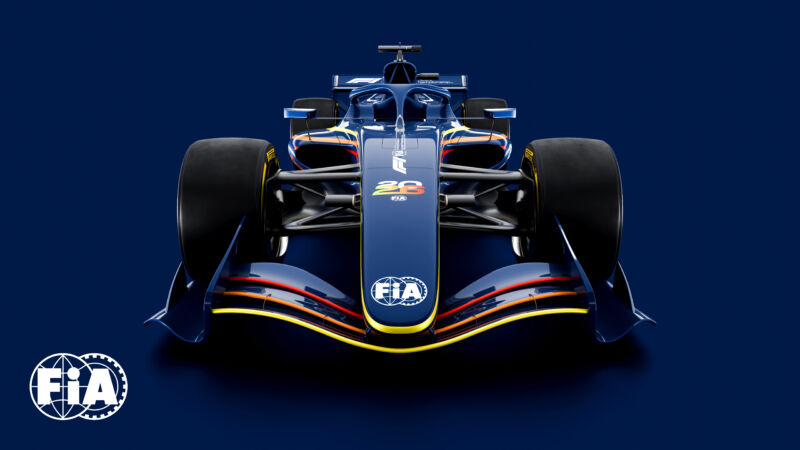F1 cars in 2026 will be smaller, safer, more nimble, more sustainable

Enlarge / For 2026, F1 cars are going on a little bit of a diet. (credit: Federation Internationale de l'Automobile)
Earlier today, the Federation Internationale de l'Automobile laid out the direction for Formula 1's next set of technical regulations, which will go into effect in 2026. It will be the second big shakeup of F1's technical regs since 2022 and involves sweeping changes to the hybrid powertrain and a fundamental rethink of how some of the aerodynamics work.
"With this set of regulations, the FIA has sought to develop a new generation of cars that are fully in touch with the DNA of Formula 1-cars that are light, supremely fast and agile but which also remains at the cutting edge of technology, and to achieve this we worked towards what we called a 'nimble car' concept. At the center of that vision is a redesigned power unit that features a more even split between the power derived from the internal combustion element and electrical power," said Nikolas Tombazis, the FIA's single-seater technical director.
Didn't we just get new rules?It feels like F1 only just got through its last big rule change with the (re)introduction of ground-effect cars at the start of 2022. Since the early 1980s, F1 cars have generated aerodynamic grip, or downforce, via front and rear wings. But drivers found it increasingly difficult to follow each other closely through corners as the dirty air from the car in front starved the following car's front wing of air, robbing it of cornering grip in the process.